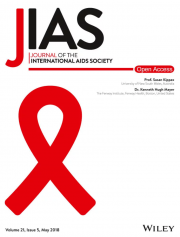Posted on March 14, 2016
Source: Journal of the International AIDS Society

Yang Han Jing Xie, Yang Han, Zhifeng Qiu, Yijia Li, Yanling Li, Xiaojing Song, Huanling Wang, Chloe L Thio, Taisheng Li
Introduction
Liver disease related to hepatitis B (HBV) and hepatitis C (HCV) may temper the success of antiretroviral therapy (ART) in China. Limited data exist on their prevalence in HIV‐positive Chinese. A multi‐centre, cross‐sectional study was carried out to determine the prevalence and disease characteristics of HBV and HCV co‐infection in HIV‐positive patients across 12 provinces.
Methods
HIV‐positive ART‐naïve patients were recruited from two parent cohorts established during November 2008–January 2010 and August 2012–September 2014. Hepatitis B surface antigen (HBsAg), hepatitis B e antigen and HCV antibody (anti‐HCV) status were retrieved from parent databases at the visit prior to ART initiation. HBV DNA was then determined in HBsAg+ patients. HCV RNA was quantified in anti‐HCV+ patients. Aspartate aminotransferase‐to‐platelet ratio index (APRI) and the fibrosis‐4 (FIB4) were calculated. Chi‐square test, Kruskal–Wallis test and logistic regression were used for statistical analysis, as appropriate.
Results
Of 1944 HIV‐positive patients, 186 (9.5%) were HIV–HBV co‐infected and 161 (8.3%) were HIV–HCV co‐infected. The highest HIV–HBV prevalence (14.5%) was in Eastern China while the highest HIV–HCV prevalence was in the Central region (28.2%). HIV–HBV patients had lower median CD4 + T cell count (205 cells/μL) than either HIV monoinfected (242 cells/μL, P=0.01) or HIV–HCV patients (274 cells/μL, P=0.001). Moderate‐to‐significant liver disease was present in >65% of the HIV–HCV, ~35% of the HIV–HBV and ~20% of the HIV monoinfected patients. Independent associations with moderate‐to‐significant liver disease based on APRI included HBV (Odds ratio, OR 2.37, P < 0.001), HCV (OR 9.64, P<0.001), CD4 count≤200 cells/μL (OR 2.55, P<0.001) and age ≥30 years (OR 1.80, P=0.001).
Conclusions
HBV and HCV prevalence is high in HIV‐positive Chinese and differs by geographic region. HBV and HCV co‐infection and HIV monoinfection are risks for moderate‐to‐significant liver disease. Only HIV–HBV is associated with greater HIV‐related immunosuppression. Incorporating screening and management of hepatitis virus infections into Chinese HIV programmes is needed.